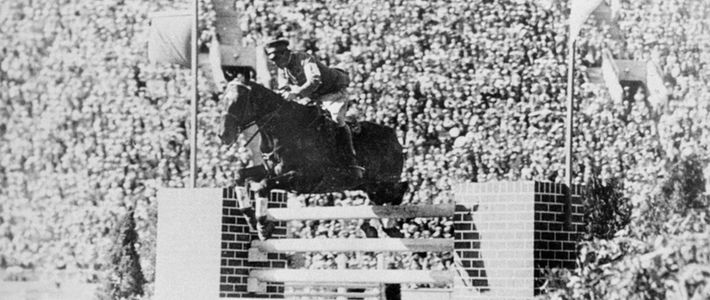
LA 1932: Japan’s Breakout Olympics
Culture- English
- 日本語
- 简体字
- 繁體字
- Français
- Español
- العربية
- Русский
In October, Japan will celebrate the fiftieth anniversary of the 1964 Summer Olympics in Tokyo, the first hosted by the nation. It is less well known that the capital was first due to hold the games in 1940. Although ultimately it would forfeit this opportunity after the outbreak of war with China in 1937, Japan’s goal of hosting the Olympics was one reason why it sent such a large team to Los Angeles in 1932—131 athletes, compared with 43 in 1928—achieving unprecedented success.
Tensions had been rising between Japan and the United States after Japan’s Imperial Army occupied Manchuria, in the Chinese northeast, in 1931. This was a major step down the slide from tentative moves toward democracy in the 1920s to all-out militarism. Long-standing anti-Asian prejudice in the United States, meanwhile, had appeared in the form of heightened restrictions on immigration over the previous decades.
Despite all this, one member of the Japan team overcame ill will to become a hero of the Games.
Baron Nishi
On the last day of competition, the Los Angeles Memorial Coliseum was packed. As the tradition of the day dictated, the equestrian jumping was the final event to be held before the closing ceremony. Six of the first eight riders were eliminated on what was a particularly tough course. So when US competitor Harry Chamberlin completed his round with only 12 faults, the home crowd expected that would be enough to secure the gold medal.
However, Japan’s Nishi Takeichi, on the horse Uranus, cleared obstacle after obstacle. Unfazed by a single refusal at the tenth, he came in with 8 faults and took victory. “We won,” Nishi told journalists who gathered around after the event, giving appropriate credit to his horse. The next day the papers were full of praise for “Baron Nishi,” who, although only an army lieutenant, genuinely was an aristocrat under Japan’s short-lived peerage system.
Prior to his winning performance, he had already become something of a celebrity in Los Angeles for his wealth, social ease, and fluent English, picked up on a trip across the United States and Europe two years earlier. Nishi’s glamor was such that he even got in with the movie star set, hobnobbing with Hollywood royalty like Douglas Fairbanks and Mary Pickford. He was also made an honorary citizen of Los Angeles before returning to Japan.
Japan’s Swimmers Dominant
If Baron Nishi got most of the media spotlight, Japan’s male swimmers took home the lion’s share of the medals, winning five golds, four silvers, and two bronzes in the six events held. The team developed its own crawl style for the LA games, based on studying film of 1928’s winners. The “Japanese crawl,” as it came to be known, was particularly suited to the shorter Japanese stature and the powerful kicking of the team’s swimmers.
Among the winners was Miyazaki Yasuji, a 15-year-old from Shizuoka Prefecture, who took gold in the 100 meter freestyle final race after breaking Johnny Weissmuller’s world record with his semifinal swim. Two days later, he won a second gold in the 4 × 200 meter relay. Kitamura Kusuo was even younger, coming in first in the 1,500 meters freestyle race when he was just 14 years and 309 days old; to this day he remains the youngest male swimmer to take a gold medal.
Only one out of Japan’s 18 medals went to a woman, but that was also in swimming. Maehata Hideko finished second in the 200 meter breaststroke behind Australia’s Clare Dennis. In Berlin in 1936, she would become Japan’s first-ever female gold medal winner in a race remembered for its live radio broadcast in Japan—in spite of the time difference—in which the announcer repeatedly exhorted the swimmer, “Maehata ganbare [come on]!”
First Attempts Not Always Successful
Japan’s largest-to-date contingent included athletes competing for the first time in hockey, water polo, and gymnastics. The hockey team was successful, taking home the silver on its first appearance, although it must be noted that only three teams actually took part. It did manage to win a game against the United States though, unlike the water polo team, which ended up fourth out of four. But of all the newcomers, the gymnastics team fared the worst.
When the six gymnasts arrived in LA, they immediately began practicing on the pommel horse, as a nearby competitor looked on in astonishment. Team Japan’s basic flank techniques were about 30 years out of date and they could not perform the more advanced routines other competitors were using. Despite some fevered practice, they were naturally unable to acquire the expertise necessary by the time competition started and ended up a laughing stock.
Despite such hiccups, Japan’s 18 medals represented a huge improvement on the total of 5 in 1928. For swimming especially, the 1930s would be looked back on as a golden age.
Epilogue
On February 19, 1945, US armed forces began their assault on Iwo Jima (today Iōtō). Among the Japanese soldiers defending the island was Nishi Takeichi, the hero of Los Angeles, now a lieutenant colonel. It’s said that when Japanese defeat became inevitable, US soldiers called out to him, declaring respect for his Olympic performance and saying that surrender was not a disgrace. But no reply came, and Nishi died in the last days of fighting. (Click here for a PDF with some interesting stories about the baron.)
(Banner photo: Baron Nishi and Uranus competing in the equestrian jumping event at the 1932 Summer Olympics in Los Angeles. © Jiji)